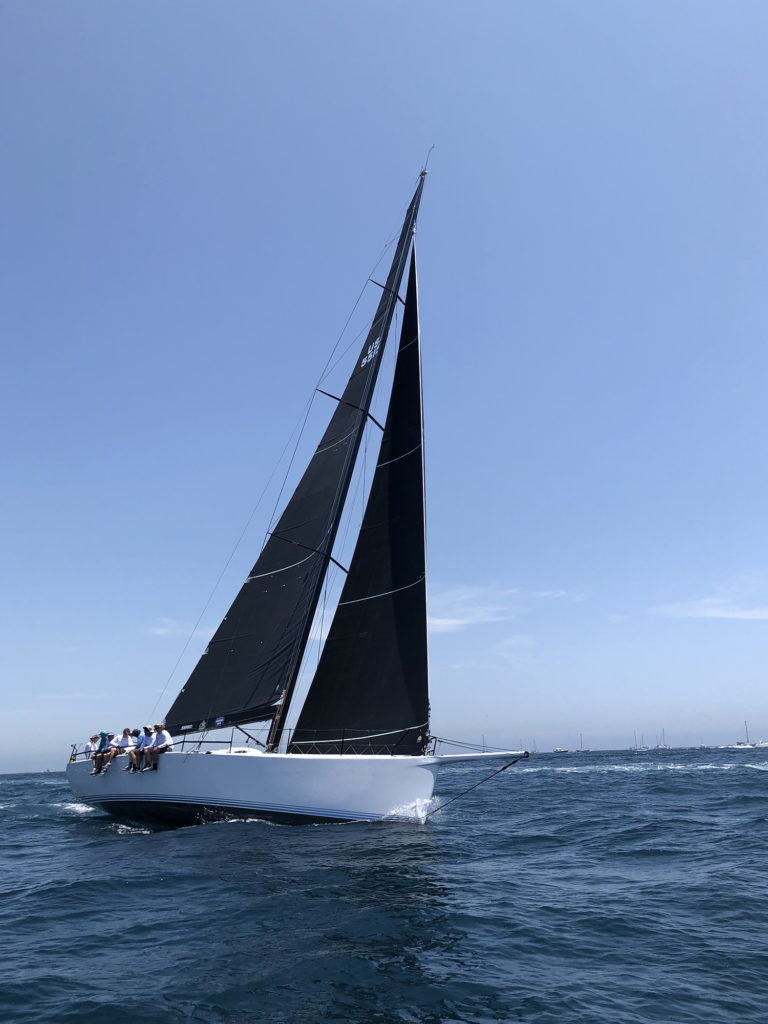
THE FINISH LINE
Dispatch from paradise: NIGEL BARRON on successfully crossing the Pacific and the finish line aboard Zvi to cap off the Transpac 2021 race.
Transpac 2021 is now in the books. And while no ocean race ever goes exactly as planned, this one came fairly close. At seven days and 17 hours, Team Zvi made a quick crossing for a 2,221-nautical-mile race. Though we didn’t win, we learned a lot. Most importantly, we learned the boat is solid, highly capable, and we can press as hard as we are able.
We had a good practice sail two days before our start. The team of 10 race crew set up for the start and tested different sail combinations based on the anticipated breeze. The day before our start, we removed every item from the boat and then consciously decided what was coming with us and what we were leaving in Los Angeles. This was also the time for us to make a final sail selection based on the forecast. As I’ve written before, keeping the boat as light as possible is important in a race like this one.
The race started at 1 p.m., and we made a nice exit from the start to Catalina Island. Transpac is a race of three parts—the start to Catalina, the race to the ocean breeze, and then the run to Hawaii. The first three days are always the toughest because of a close to broad reach, so the boat is on a pretty good heel. This is also the part where the crew is adjusting to life at sea and a watch system that is four hours on, four hours off.
Life at sea is unlike anything experienced in Puget Sound, except we’re really treating an ocean race like an inshore race. Someone is always trimming the sails, someone is constantly adjusting the stack of sails on the rail to trim out the boat, and you’re pressing the boat as hard as you can 24 hours a day. Our navigator, Andy Koch, did an amazing job keeping us continually in the breeze. Andy was also continuously downloading the YellowBrick files to keep a track on our competition and weather files to keep track of the ever-changing wind and rain.
As you’d expect on a long, hard-charging race, breakages, wear and tear are inevitable. Because the boat came out of a refit and went straight to sailing, we also adjusted our polar and sail selection charts on the fly.
The biggest single issue turned out to be the tack lines for our spinnakers. We were breaking them from a chafe inside the newly formed bow sprit. This was probably not something we would ever have discovered sailing in Puget Sound, at least not in the short term. This kind of problem takes time under sail to reveal itself. Thankfully, we came up with a fix in the middle of the ocean.
All in all, we had a great race and learned that we can be faster. And we will be faster next year. Transpac 2021 turned out to be an excellent shakedown and practice for Pacific Cup 2022. As I write this, I’m sitting near the pool at one my favorite places, Kane’ohe Yacht Club on the island of Oahu. Kane’ohe is also the finish for the Pacific Cup, which starts in San Francisco next summer. Until then, I’ve got my list of fixes and upgrades to take to the boatyard.


